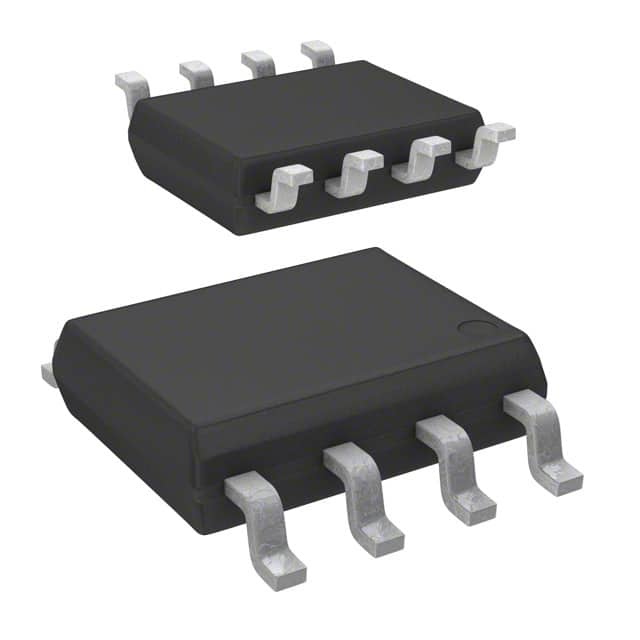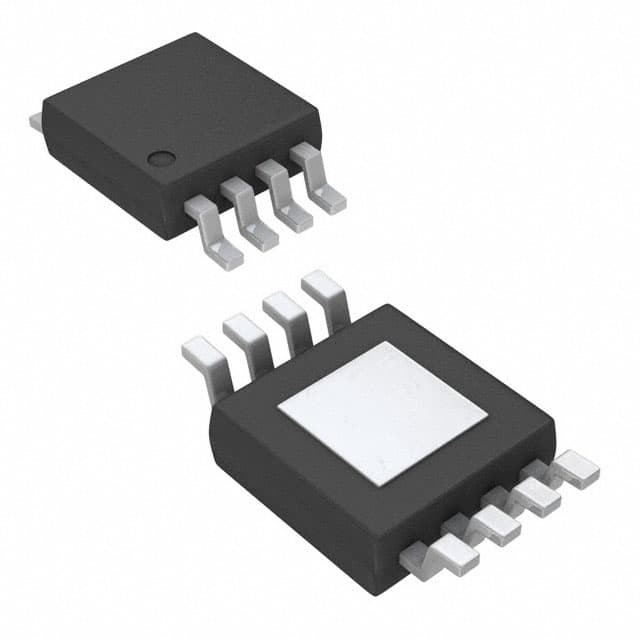Ⅰ. PMIC - Voltage Regulators - Linear
Ⅱ. Physical Characteristics of PMIC - Voltage Regulators - Linear
Ⅲ. Electrical Characteristics of PMIC - Voltage Regulators - Linear
PMIC - Voltage Regulators - Linear
Linear voltage regulators are a type of voltage regulator commonly used in Power Management Integrated Circuits (PMICs) to provide stable and regulated output voltage. Unlike switching voltage regulators, which use switching techniques to regulate the output voltage, linear voltage regulators dissipate excess energy as heat to maintain the desired output voltage. Here is an overview of PMIC linear voltage regulators:

1.Operation Principle: Linear voltage regulators use a voltage reference, error amplifier, pass transistor, and feedback loop to regulate the output voltage. The voltage reference provides a stable reference voltage, which is compared to a fraction of the output voltage in the error amplifier. The error amplifier generates an error signal based on the comparison and adjusts the pass transistor to maintain the desired output voltage.
2.Regulation Accuracy: Linear voltage regulators typically offer good regulation accuracy, meaning they can maintain a stable output voltage within a specified tolerance. The accuracy is influenced by factors such as the voltage reference stability, error amplifier characteristics, and feedback mechanism.
3.Dropout Voltage: Dropout voltage is the minimum voltage difference between the input and output of the linear voltage regulator for it to maintain regulation. When the input voltage falls below this threshold, the regulator may not be able to provide the desired output voltage. Lower dropout voltage is advantageous, especially in battery-powered applications where the input voltage may decrease as the battery discharges.
4.Load Regulation: Load regulation refers to the ability of the linear voltage regulator to maintain a stable output voltage as the load current changes. Good load regulation ensures that the output voltage remains constant regardless of the load variations. The load regulation is influenced by the design of the feedback loop and the pass transistor.
5.Line Regulation: Line regulation refers to the ability of the linear voltage regulator to maintain a stable output voltage despite fluctuations in the input voltage. It ensures that the output voltage remains constant even when the input voltage changes. Line regulation is important, especially in applications where the input voltage may vary due to factors such as supply voltage ripple or changes in the power source.
6.Thermal Considerations: Linear voltage regulators dissipate excess energy as heat, which can lead to increased temperature. Proper thermal management is important to ensure that the regulator operates within its specified temperature limits. Some linear regulators may incorporate thermal shutdown mechanisms to protect against excessive temperature.
7.Noise and Ripple Rejection: Linear voltage regulators typically provide good rejection of input voltage noise and ripple. They help filter out high-frequency noise and provide a clean and stable output voltage. This feature is important in applications where a low-noise power supply is required, such as sensitive analog circuits or audio applications.
8.Protection Features: Some linear voltage regulators include protection features to safeguard against fault conditions. These features may include overcurrent protection (OCP), overtemperature protection (OTP), and short-circuit protection (SCP). These protections help prevent damage to the regulator and the connected devices in case of faults or abnormal conditions.
9.Package Types: Linear voltage regulators are available in various package types, including surface-mount packages (such as SOT-23, SOT-89, or DFN) and through-hole packages (such as TO-220 or TO-92). The package type determines the physical dimensions, pin configuration, and mounting style.

Linear voltage regulators offer simplicity, low noise, and good regulation accuracy, making them suitable for a wide range of applications. They are commonly used in consumer electronics, automotive systems, industrial control systems, and other electronic devices where low cost, moderate efficiency, and reliable voltage regulation are required.
Physical Characteristics of PMIC - Voltage Regulators - Linear
The physical characteristics of linear voltage regulators, which are part of Power Management Integrated Circuits (PMICs), can vary depending on the specific model and manufacturer. However, there are some common physical characteristics to consider:
1.Environmental Considerations: The physical characteristics of linear voltage regulators may include environmental specifications, such as operating temperature range, humidity tolerance, and thermal resistance. These specifications ensure reliable operation under different environmental conditions.
2.Package Type: Linear voltage regulators are available in various package types, including surface-mount packages (such as SOT-23, SOT-89, or DFN) and through-hole packages (such as TO-220 or TO-92). The package type determines the physical dimensions, pin configuration, and mounting style.
3.Pin Configuration: The pin configuration of a linear voltage regulator specifies the electrical connections required for proper operation. It includes pins for input voltage, output voltage, ground (GND), enable/disable control, feedback, and other necessary connections. The pin configuration can vary depending on the specific voltage regulator model and package type.
4.Input/Output Capacitors: Some linear voltage regulators may require external input and output capacitors for stability and proper operation. The datasheet or application notes provided by the manufacturer specify the recommended capacitor values and types. These capacitors are typically connected to specific pins on the voltage regulator.
5.Thermal Considerations: Linear voltage regulators dissipate excess energy as heat, and proper thermal management is important to ensure their reliable operation. They may feature exposed thermal pads or additional thermal management features like thermal vias or heatsinks to help dissipate heat and maintain the regulator's temperature within safe limits.
6.Mounting Options: Linear voltage regulators can be mounted on printed circuit boards (PCBs) using various methods, including surface-mount technology (SMT) or through-hole mounting. The mounting method depends on the package type and the assembly process used in the target application.
7.Size and Dimensions: The size and dimensions of linear voltage regulators can vary depending on factors such as the power handling capabilities, package type, and manufacturer's design choices. The physical size is typically specified in terms of length, width, and height or package outline dimensions. Compact size is often desirable for space-constrained applications.
8.Markings and Labels: Linear voltage regulators often have markings or labels on the package to provide identification, part number, manufacturer logo, pinout information, and other relevant details. These markings aid in proper identification and assembly of the voltage regulator on the PCB.
Electrical Characteristics of PMIC - Voltage Regulators - Linear
The electrical characteristics of linear voltage regulators, which are part of Power Management Integrated Circuits (PMICs), play a crucial role in their performance and suitability for specific applications. Here are some important electrical characteristics to consider:
1.Output Voltage Range: The output voltage range represents the range of voltages that the linear voltage regulator can provide at its output. Different applications require specific output voltage levels, and the regulator should be capable of delivering voltages within the desired range.
2.Output Voltage Accuracy: Output voltage accuracy refers to how closely the linear voltage regulator can maintain the desired output voltage within a specified tolerance. It is usually expressed as a percentage of the nominal output voltage. Higher accuracy is desirable in applications that require precise voltage levels.
3.Input Voltage Range: The input voltage range specifies the minimum and maximum allowable voltages that the linear voltage regulator can accept at its input. It is important to choose a regulator with an input voltage range that matches the power source or supply voltage in the application.
4.Dropout Voltage: Dropout voltage is the minimum voltage difference between the input and output of the linear voltage regulator for it to maintain regulation. When the input voltage falls below this threshold, the regulator may not be able to provide the desired output voltage. Lower dropout voltage is advantageous, especially in battery-powered applications where the input voltage may decrease as the battery discharges.
5.Thermal Considerations: Linear voltage regulators dissipate excess energy as heat, which can lead to increased temperature. It is important to consider the thermal characteristics of the regulator, such as thermal resistance, thermal shutdown protection, and maximum operating temperature, to ensure reliable operation and prevent overheating.
6.Line Regulation: Line regulation refers to the ability of the linear voltage regulator to maintain a stable output voltage despite variations in the input voltage. It measures the change in output voltage as the input voltage varies. Lower line regulation indicates better performance in maintaining a stable output voltage under different input voltage conditions.
7.Load Regulation: Load regulation refers to the ability of the linear voltage regulator to maintain a stable output voltage despite changes in the load current. It measures the change in output voltage as the load current varies. Lower load regulation indicates better performance in maintaining a stable output voltage under different load conditions.
8.Quiescent Current: Quiescent current, also known as ground current or supply current, is the current consumed by the linear voltage regulator when there is no load connected to its output. Lower quiescent current is desirable in applications that require low power consumption to maximize battery life or minimize power dissipation.
9.Protection Features: Linear voltage regulators may include protection features to safeguard against fault conditions. These features may include overcurrent protection (OCP), overtemperature protection (OTP), and short-circuit protection (SCP). These protections help prevent damage to the regulator and the connected devices in case of faults or abnormal conditions.
10.Ripple Rejection: Ripple rejection refers to the ability of the linear voltage regulator to suppress or attenuate unwanted AC voltage ripple present on the input voltage. A high ripple rejection ratio indicates better performance in filtering out ripple and providing a clean output voltage.



